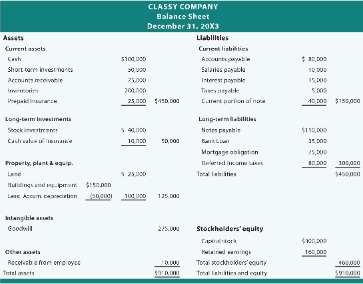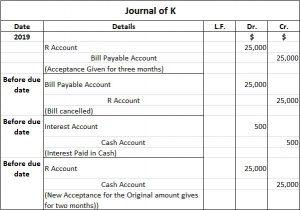Bank Reconciliation Statement: Examples and Formula

If the two balances differ, you’ll need to look through everything to find any discrepancies. Check the balances of the bank statements and the cash balance in your books after you’ve adjusted all the transactions and compared them. If not, there may be checks outstanding or deposits in transit or you may need to perform another reconciliation. As for outstanding checks, you’ve recorded them in the books, but they haven’t cleared in the bank account. You need to deduct the check amounts from your bank balance to decrease it so that it reflects the balance of your cash book. A bank reconciliation statement is important in managing your company’s finances.
An expense or a sale may have been overlooked and not added to the ledger, causing a balance difference between the book and the bank statement. When the amounts aren’t equal, you’ll need to verify the numbers, fix any errors, and repeat the reconciliation process to find out where the discrepancy is. Prepare your financial records for a particular period by processing receivables and payables. Our calculator is easy to understand and use, which makes it a good choice for businesses of all sizes and levels of accounting knowledge. Now, under the “Deposits Outstanding” section, enter the necessary information.
Regular bank reconciliations also help prevent fraudulent or unauthorized transactions from going unnoticed. A bank reconciliation statement is a financial document that compares the balance in a company’s cash book (or general ledger) to the balance reported by the bank on the bank statement. The goal is to identify and explain any differences between these two records. This process helps to ensure that the company’s accounting records are accurate and up-to-date. In the bank reconciliation process, the total amount of outstanding checks is subtracted from the ending balance on the bank statement when propeller industries email format computing the adjusted bank balance.

You need to make sure that all the deposits you’ve recorded in the books reflect in the bank statement. Match each deposit from the debit side of your record to the credit side on the bank statements while ensuring that the amounts correspond. Even after accounting for outstanding checks, it’s possible for your bank and book balance to still not be in sync. This means the bank has made an adjustment to your balance that has not yet been recorded in your general ledger (G/L).
Editorial integrity
- While accounting software apps that offer bank connectivity can expedite the reconciliation process, they should not replace performing your own monthly bank reconciliation.
- Book transactions are transactions that have been recorded on your books but haven’t cleared the bank.
- This document can help ensure that your bank account has a sufficient balance to cover company expenses.
So, go ahead and experience seamless financial management with our calculator, where efficiency meets security. For operating expense definition example, say the bank charged your business $25 in service fees but it also paid you $10 in interest. Once you’ve made these final adjustments, the bank and book balance should be reconciled. Making sure a company’s and its bank’s listed balances align is also a way to ensure the account has sufficient funds to cover company expenditures.
These records include check registers, the general ledger, and the balance sheet. A bank reconciliation statement is a document prepared by a company that shows its recorded bank account balance matches the balance the bank lists. This statement includes all transactions, such as deposits and withdrawals, from a given timeframe. The information on your bank statement is the bank’s record of all transactions impacting the company’s bank account during the past month. Compare the ending balance of your accounting records to your bank statement to see if both cash balances match. We strongly recommend performing a bank reconciliation at least on a monthly basis to ensure the accuracy of your company’s cash records.
Next, under the “Withdrawals Outstanding” section, enter any checks or other outstanding charges that have yet to show on your account balance. The Bank Reconciliation Calculator designed by iCalculator meets your accounting needs immaculately. You can use the results from the calculator to create and improve awareness about discrepancies relating to accounts with just a few entries & clicks, no need for manual math calculations. Inferences drawn based on the calculator’s results will show you if your accounts department is working accurately or you need to take actions to make some improvements. And, the best part is, it’s online and available at all times, to provide you accurate results.
What are common problems with bank reconciliations?
Your reconciliation calculation is balanced when the value of “Todays or Latest Register Balance” is equal exactly to “The Adjusted Ending Statement Balance”. As you navigate through the complexities of bank reconciliation, our ‘Bank Reconciliation Calculator’ ensures to prioritize your data security. The tool processes all calculations locally on your device, ensuring your financial data never leaves your system. It’s not just about providing you with accurate results but also about creating a secure environment for managing your finances.
Step 2: Review the deposits and withdrawals
A bank reconciliation is when the balance in a business’s bank account is compared to the same amount in its accounting records. If you detect incorrect amounts or an omission in your books, you also need to correct those transactions so your records match the bank statements. The account holder is responsible for preparing gross profit definition a bank reconciliation to identify differences between the cash balance and the bank statements.
Doing a bank reconciliation is fairly simple, but you need to be diligent in your efforts and avoid skipping steps to ensure the right checks and balances. It’s convenient to do this at the end of each month because that is when banks send monthly statements, which can be used as the basis for reconciliation. However, a reconciliation can be done at any time using online month-to-date statements to adapt to different business needs. If you’re a small business owner, set a dedicated date each month after you receive a bank statement (either by mail or email) to tackle bank reconciliation. Bankrate.com is an independent, advertising-supported publisher and comparison service.

0 Comments
Leave your comment here